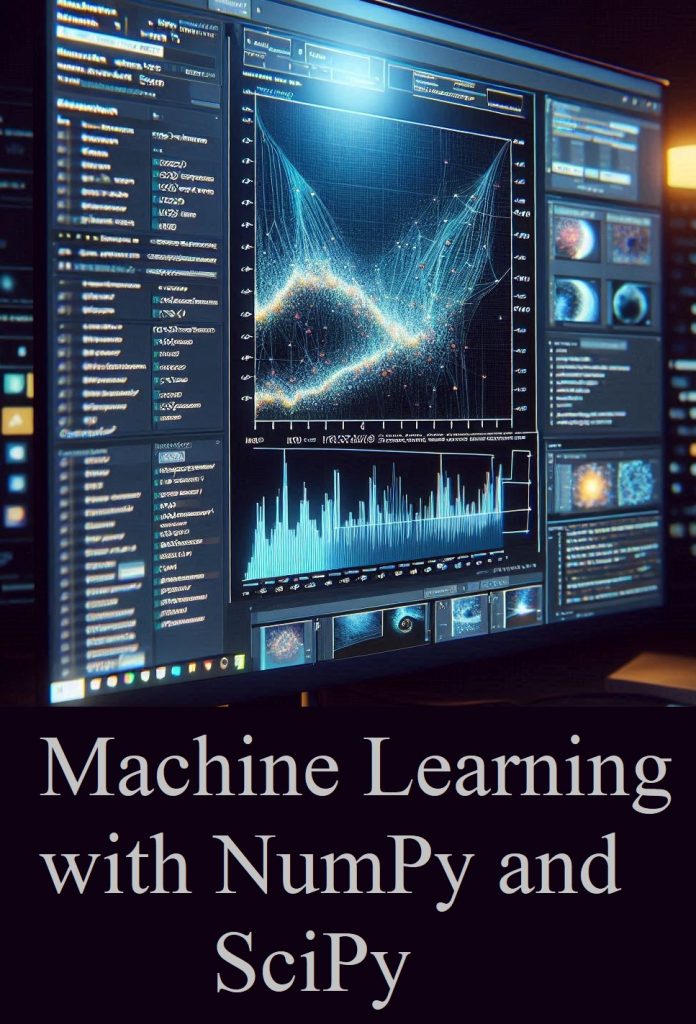Rewrite this article:
Linear Algebra in Python
Many machine learning algorithms rely on linear algebra operations such as matrix multiplication and eigenvalue decomposition:
Matrix multiplication:NumPy's numpy.dot() function efficiently performs matrix multiplication.
# Matrix multiplication
matrix_a = np.array([[1, 2], [3, 4]])
matrix_b = np.array([[5, 6], [7, 8]])
result = np.dot(matrix_a, matrix_b)
Decomposition of eigenvalues:SciPy's scipy.linalg.eig() function calculates the eigenvalues and eigenvectors of a matrix.
from scipy.linalg import eig# Eigenvalue decomposition
values, vectors = eig(matrix_a)
Optimization
Optimization techniques are used to minimize or maximize objective functions. SciPy offers a variety of optimization algorithms:
Minimize functions:Use scipy.optimize.minimize() to find the minimum of a function.
from scipy.optimize import minimize# Define a simple quadratic function
def objective_function(x):
return x**2 + 5*x + 6# Find the minimum
result = minimize(objective_function, x0=0)
Curve fittingSciPy's :scipy.optimize.curve_fit() can fit a curve to data, which is useful for regression tasks.
from scipy.optimize import curve_fit# Define a model function
def model(x, a, b):
return a * x + b# Fit the model to data
params, covariance = curve_fit(model, x_data, y_data)
SciPy for Machine Learning Algorithms
NumPy and SciPy provide fundamental support for implementing various machine learning algorithms:
Gradient Descent in Machine Learning:Implementing gradient descent for optimization in machine learning models.
# Gradient descent implementation
def gradient_descent(x, y, learning_rate, iterations):
for _ in range(iterations):
gradients = compute_gradients(x, y)
x -= learning_rate * gradients
return x
K-Means Clustering Python:Perform clustering tasks such as k-means using NumPy and SciPy functions.
from scipy.cluster.vq import kmeans, vq# K-means clustering
centroids, _ = kmeans(data, num_clusters)
clusters, _ = vq(data, centroids)
Data Visualization
Effective visualization of data and results is essential in machine learning. While Matplotlib and Seaborn are commonly used libraries, NumPy and SciPy can help prepare data for visualization:
Preparing data for visualization:Use NumPy to manipulate and preprocess data before visualizing it with Matplotlib.
import matplotlib.pyplot as plt# Prepare data
x = np.linspace(0, 10, 100)
y = np.sin(x)# Plot the data
plt.plot(x, y)
plt.xlabel('X')
plt.ylabel('Y')
plt.title('Sine Wave')
plt.show()
Practical examples and use cases
Example 1: Predicting real estate prices
Imagine a scenario where you want to predict housing prices based on characteristics such as square footage, number of bedrooms, and location. You can use NumPy for data manipulation and SciPy for optimization:
Data preparation:Load and preprocess data using NumPy.
import numpy as np# Load data
data = np.loadtxt('housing_data.csv', delimiter=",")
X = data[:, :-1]
y = data[:, -1]
Linear regression:Use SciPy to perform linear regression and predict prices.
from scipy.linalg import lstsq# Perform linear regression
coefficients, residuals, rank, s = lstsq(X, y)
Prediction:Use the model to predict new housing prices.
# Predict prices
predictions = np.dot(X_new, coefficients)
Example 2: Grouping customer data
Imagine you have customer data and you want to group customers based on their purchasing behavior:
Load and prepare data:Use NumPy to manage the dataset.
import numpy as np# Load customer data
data = np.loadtxt('customer_data.csv', delimiter=",")
Apply K-Means Clustering:Use SciPy's k-means clustering algorithm to group customers.
from scipy.cluster.vq import kmeans, vq# Cluster the data
centroids, _ = kmeans(data, num_clusters)
clusters, _ = vq(data, centroids)
Analyze clusters: Examine the resulting clusters to understand customer segments.
# Analyze clusters
for cluster_id in range(num_clusters):
print(f'Cluster {cluster_id}: {np.mean(data[clusters == cluster_id], axis=0)}')
Conclusion
NumPy and SciPy are valuable tools for machine learning and data analysis, providing the foundational support needed for efficient data manipulation, mathematical computation, and algorithm development. By leveraging these libraries, data scientists and machine learning practitioners can build robust models, perform complex analyses, and derive useful insights from data.
Understanding machine learning with numpy and SciPy can greatly improve your ability to solve various problems and develop effective solutions. As you explore these libraries, continue to experiment with different algorithms, techniques, and applications to stay on the cutting edge of machine learning.
Source link
